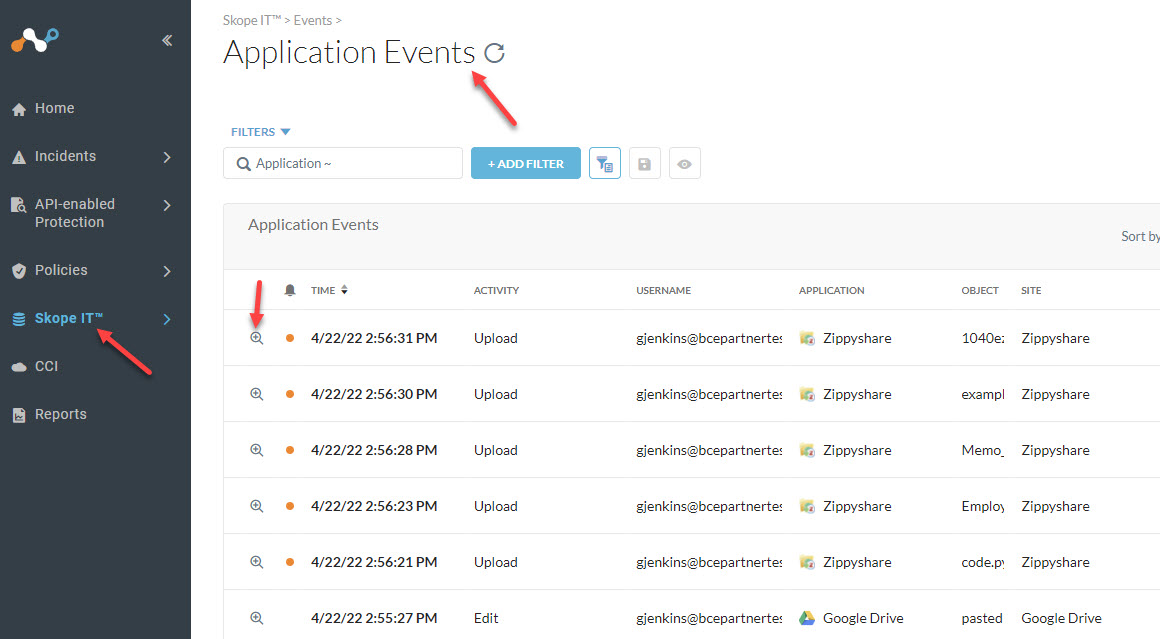You have your Netskope cloud account, now what do you do with it?
- Create a basic real-time policy to “watch” traffic
- Steer client traffic to your Netskope tenant
Testing tools.
- The Netskope notskope site will verify that you are steering your traffic via the Netskope tenant.
- Once you start blocking traffic a good way to test is with the Netskope Security Check.
https://www.netskopesecuritycheck.com/
Real-time Protection Policy
Policies > Real-time Protection > New Policy > Web Access

I go back and forth on if it is worth putting the system to just monitor. In this one, I list all web traffic and select all activities (browse, download, formpost, login attempt, and upload). I then watch for CCI rating. CCI is Netskope’s Cloud Confidence Index, basically their rating on how safe a cloudapp/website is. Setting the action to Alert will show you activity in the SkopeIT logs. I am always a little surprised about what I see.
It might make more sense to create a policy to block malware but unless you hit some malware, Netskope wouldn’t generate any logs on it.
Fields
-
Source: leave blank for all users
-
Destination: Category (select all)
-
Activities & Constraints: Activity = browse, download,formpost,login attempt,upload
-
CCL = Excellent, High, Medium, Low, Poor, Unknown
-
Profile & Action: Action:Alert
-
Set Policy: <name>
Save and Apply Changes

Steer client traffic
Now you just need to get traffic to the tenant. Of course, you can send a GRE, IPsec, or SD-WAN tunnel to it but in this case, we will use the Netskope Client to steer traffic to it.
At the bottom of the page select > Settings
Security Cloud Platform > Traffic Steering > Steering Configuration
Go ahead and steer all users and all traffic.
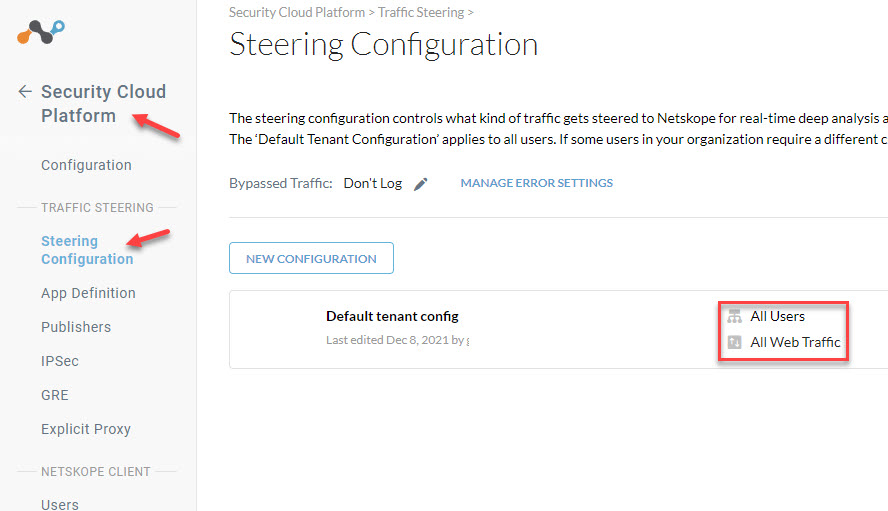
Security Cloud Platform > Netskope Client > Users
Add the user’s email address that you want. They will get an email to set up the client.
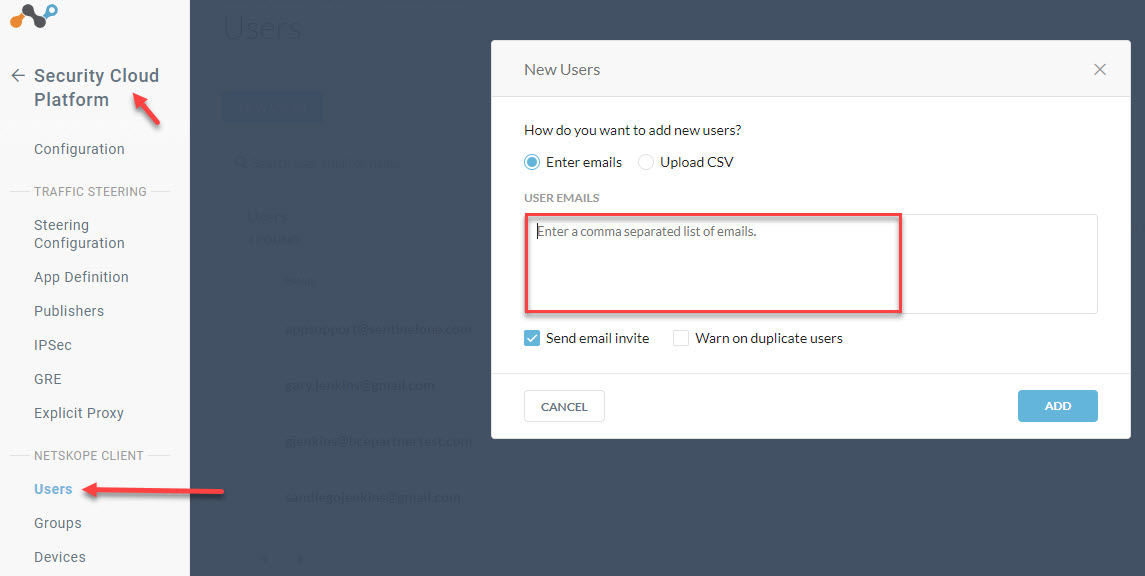
Once you have the client installed give the notskope site a try.
It should show that your traffic is going through the NewEdge network.
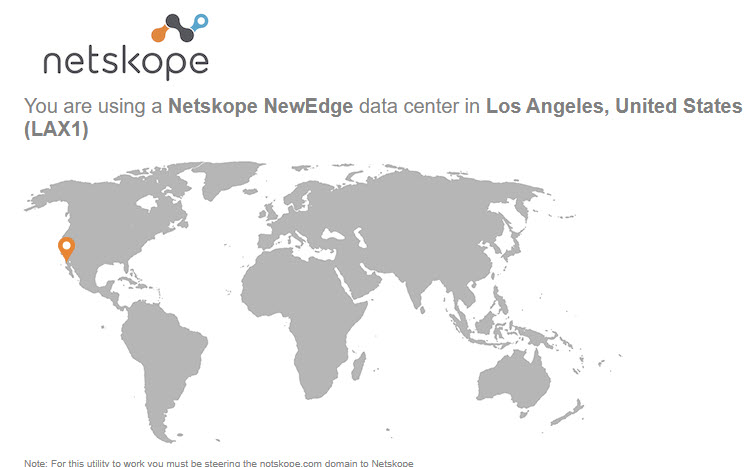
What about the security check?
https://www.netskopesecuritycheck.com/
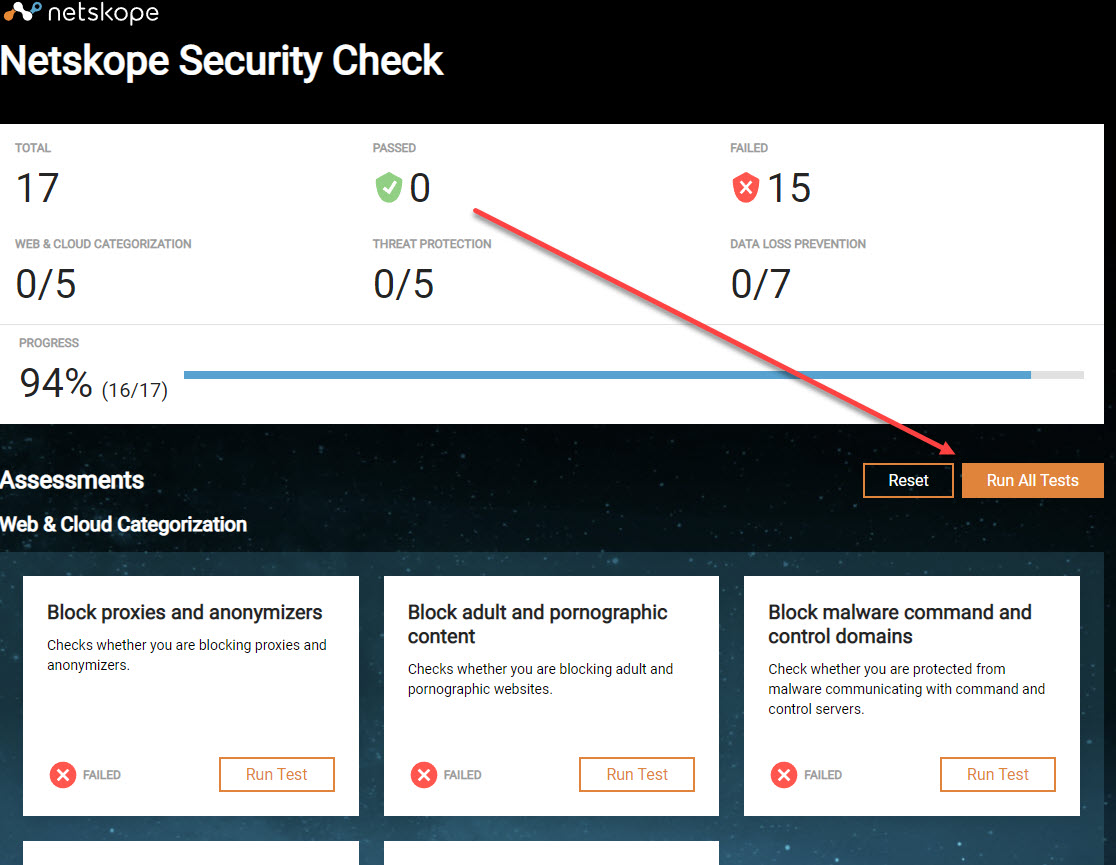
Go back into the Netskope interface and look at Skope IT > Application Events. Click on the magnifying glass for detailed information.
